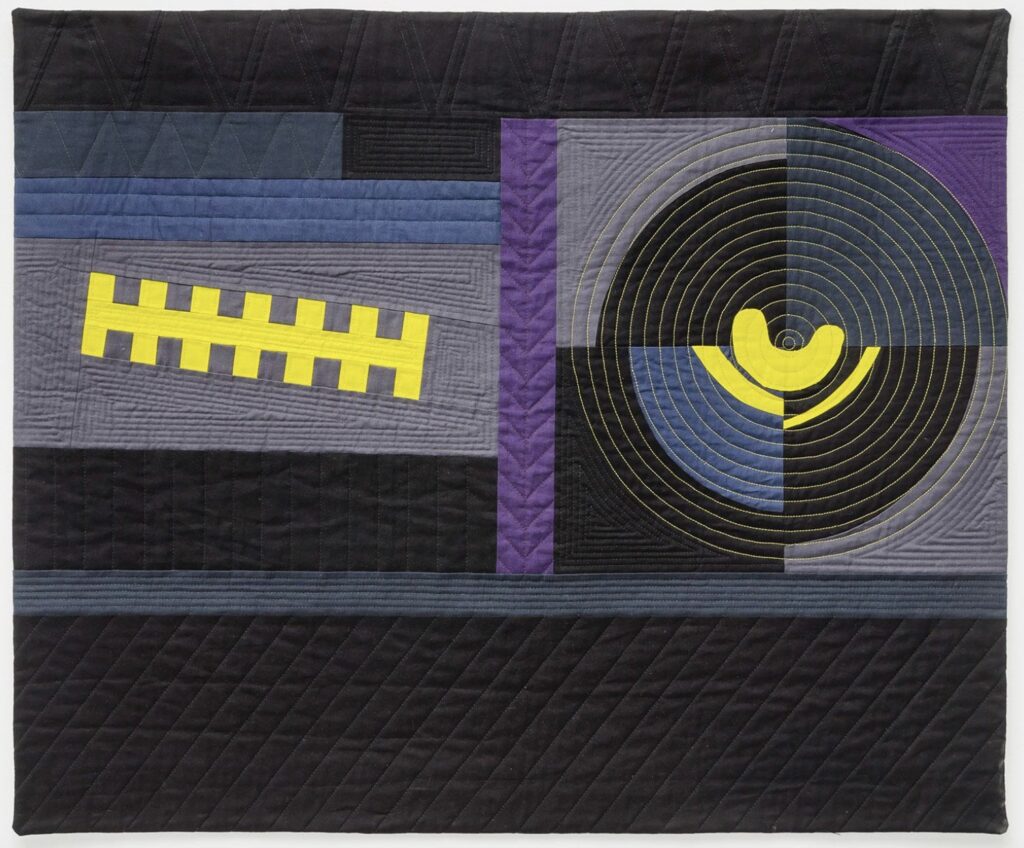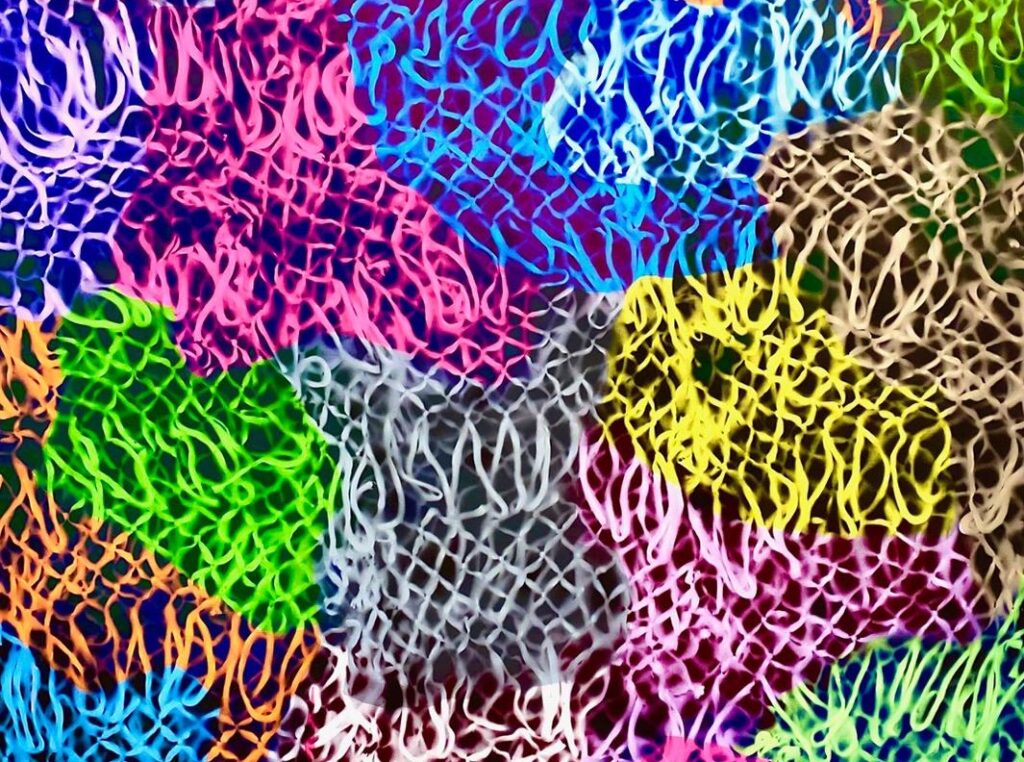In the first of five exhibitions that will showcase the recipients of Minnesota Street Project Foundation’s inaugural granting program for Black artists and cultural workers—the California Black Voices Project—Lizzetta LeFalle-Collins has curated “The Ambiguities of Blackness” (through June 12).
Grantee LeFalle-Collins leads the series with an especially provocative curatorial proposition. Relevant to the granting program and society at large, LeFalle-Collins packs the exhibition’s press release with the powerfully direct statement, “Black people are not culturally and ancestrally monolithic.” As such, “The Ambiguities of Blackness” presents seven Black artists working in a diverse range of media, subject matter, narratives devices, and representational strategies.
The exhibition’s most striking relationship emerges out Lavialle Cambell’s quilts and David Huffman’s paintings, where abstraction balances individuality and collective identities.

Cambell’s exquisitely crafted, stunning works draw upon African American quilting traditions and communities, like those emerging out of Gees Bend, Arkansas. In the artist’s slyest piece, “Right Breast Left” (2017), black fabric suggests skin and self-portraiture. A vertical purple strip of fabric operates as the composition’s centerline, correlating anatomically with the sternum where the chest is typically mirrored with a right and left breast. The circular geometric pattern on the right contrasts the rectangular pattern on the left, disrupting notions of bodily and compositional symmetry.
With highly contrasting yellow fabric, arcs on the right suggest the raised tissue of the nipple and areola, while on the left, a yellow rectangular pattern, akin to the stitching atop a football, alludes to a raised scar. Cambell represents her own mastectomy through an extremely refined composition, shapes, and colors. As African American quilting traditions have been historically centered on communities of women, Cambell claims that history to address disease and resilience within the lives of contemporary Black women.

In contrast, Huffman draws upon basketball as sport and play—normatively associated with Black men and boys—and as a nexus for community and family. Stenciling over basketball nets with black spray paint, Huffman creates a tangled network of lines across his panels. Over the ghostly x-ray-like nets, fluorescent patches of color break the paintings into biomorphic shapes. Through titles like “We are Family”(2021), Huffman evokes Sister Sledge’s 1979 hit and the idioms used in Black culture to establish a sense of belonging.
The idea of Black culture as an extended family are also present in his titles “Soul Sister” (2021) and “Children of the Sun” (2021). As the paintings formally and titularly suggest Black culture as a network of connections, the brightly painted areas suggest luminous pod and individuality within a larger community.
The abstraction of color and shape within Cambell’s and Huffman’s works brilliantly exists on multiple levels of meaning, where the color black operates as metaphor for bodies and individuals with distinctive and collective identities. While LeFalle-Collins’ title suggests Blackness is ambiguous, ambiguity does not negate nor diminish its power. Rather, the multiplicity and range within these artists affirms Black culture’s vitality, where collectivity and individual identities will continue to shift and transform.
“Ambiguities of Blackness” runs through June 12 at the Minnesota Street Project. More info here.





